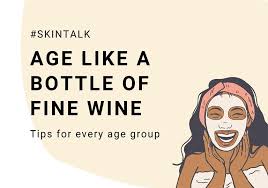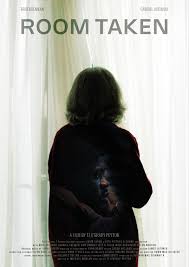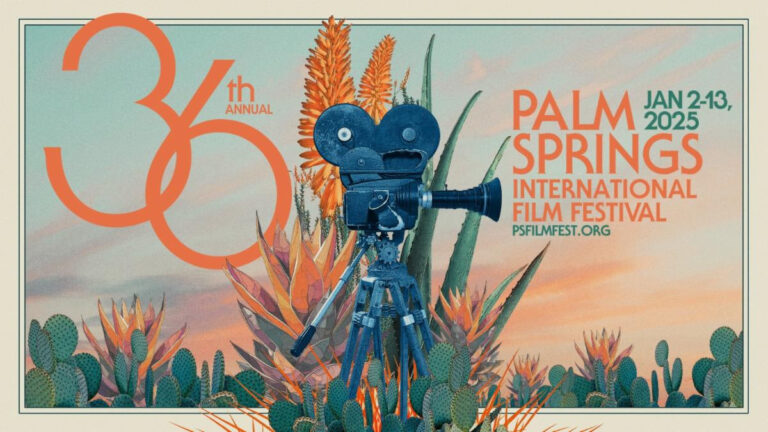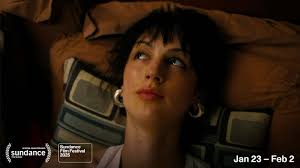Green Day, Justin Timberlake, and Noah Kahan Headline BottleRock 2025
The wait is over—BottleRock Napa Valley’s 2025 lineup is here! As the proud presenting sponsor for the 9th year, JaM Cellars is thrilled to be back to the ultimate festival experience at the JaMPad.
This year’s headliners taking stage May 23 – 25 include Green Day, Justin Timberlake, and Noah Kahan, along with an incredible lineup of artists for three unforgettable days of music, mouthwatering food, and, of course, delicious JaM Cellars wines.
Why Do Older Movies Look Faster?
When we think about old, silent films, we’re likely to picture the choppy, fast-paced movements of Charlie Chaplin or Buster Keaton, or perhaps the newsreel footage of Babe Ruth hitting a home run and seemingly zipping around the bases at 40 miles per hour. As talented as these individuals were, they weren’t capable of moving at speeds far beyond the range of normal people. So why do they appear that way on film?
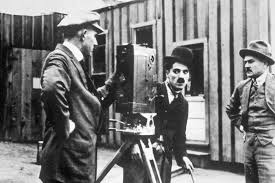 Film Only Provides the Illusion of Movement
Film Only Provides the Illusion of Movement
To answer this question, we need to go back to some of the basics of filmmaking. Throughout the history of cinema, movie cameras have never been able to faithfully capture real-life movement. Rather, they record a series of still images in rapid succession and replay them at speeds fast enough to trick the human mind into perceiving movement.
The number of individual images (or frames) displayed in one second of film is known as the frame rate, measured in frames per second (fps). Thomas Edison, who patented (but didn’t invent) the movie camera, noted that film needed to be shown at a speed of at least 46 fps to provide the illusion of movement. But in the early days of cinema, this proved too pricey to be practical, and some filmmakers found that the visual illusion could be sustained — and expensive celluloid film stock conserved — with frame rates closer to 16 fps, or even as low as 12 fps. While this speed was considered fast enough for a movie camera of that era, it is noticeably slower than the 24-fps rate that later became commonplace for both filming and projecting. And when old footage filmed at 16 fps or lower is accelerated for replaying at modern speeds, it will make the objects on screen move noticeably faster.
Some Films Were Sped Up on Purpose
In the 1920s, the major Hollywood studios largely used the Bell and Howell 2709 movie camera. This model featured a hand crank that churned through half a foot of film with each revolution. As such, turning the handle twice per second equated to a shooting speed of 16 fps, which became the general standard for the era.
That said, many silent film directors deliberately ordered sequences shot at slower or faster speeds — “undercranked” or “overcranked” — for effect. A scene filmed at a slower speed (i.e. 16 fps) and then projected at a faster speed (i.e. 24 fps) will appear sped up, while the effect of slow motion comes when something is filmed at an even faster speed and then slowed to a standard speed for projection.
Studios often provided theaters with specific instructions for projection speeds that were higher than the filmed speed to make the motion look faster than normal, generally for comedic purposes or action sequences. And yet many of these theaters projected the films at even higher speeds in order to cram more showings and boost the number of paying customers in a single day. The end result of a film shot at, say, somewhere between 14 and 18 fps and projected at 22 fps or faster is the sped-up motion typical of movies from this era.
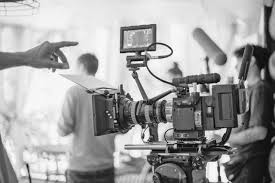 Sound Changed the Standard for Speed
Sound Changed the Standard for Speed
Though Edison and other innovators had previously attempted to match sound to moving pictures with limited success, the successful rollout of the Vitaphone with the Warner Bros. features Don Juan (1926) and The Jazz Singer (1927) showed that “talkies” were here to stay.
The Vitaphone solved the problem of sound and picture synchronization with a mechanical turntable that simultaneously powered a phonograph record alongside a film projector. A 16-inch record played at a speed of 33.3 rotations per minute (rpm) delivered 11 minutes of sound, matching the 11 minutes of visuals produced by 1,000 feet of film played at 24 fps. As sound ushered in a new era of cinema, Hollywood studios sought to standardize film speeds to preserve the uniform quality of their expensive productions, and 24 fps became the standard frame rate across the industry (notably slower than Edison’s original recommendation of 46 fps).
The reason for this exact number varies: Some sources note the depreciation of audio fidelity at lower speeds, or the fact that 24 is divisible by several numbers, enabling cinematographers to easily mark off smaller increments of film. Yet it’s likely that 24 fps was accepted throughout the industry largely because of Vitaphone’s initial success at that number.
The Filming Speed Today
Naturally, the equipment that once was considered cutting edge in Hollywood has long since been replaced by new and better creations. The all-important Vitaphone quickly became obsolete with the emergence of sound-on-film technology in the 1930s, and the Bell and Howell 2709 camera fell out of production by 1958. Even the longtime staple of celluloid film was largely pushed aside by major studios with the rise of digital movies in the 2000s.
Yet the old-fashioned 24 fps film rate remains standard across the industry, despite the ability of modern cameras to shoot at far greater speeds. One major reason for this is simply that audiences have become accustomed to the distinct look of movies shot at that speed (as evidenced by the critical uproar over the visuals from the 48-fps version of 2011’s The Hobbit).
This means we’ll likely continue watching movies filmed at this standard for the foreseeable future. And in the meantime, we can also enjoy the old clips of Charlie, Buster, and other luminaries of the silent era, the jerky movements and clumsy intertitles serving as a reminder of how far this beloved form of storytelling has come over the past century.
An Interview with The Bear’s Edwin Lee Gibson
By Emily Safron
Los Angeles, CA (The Hollywood Times) 1/13/25 – For Edwin Lee Gibson, his multiple partnerships with FX Networks were a mere coincidence. Now, the duo is on the road to success. “FX is fearless, and I see myself that way, so it’s a good fit,” he explained.

Gibson started acting when he was 16 and has since starred in 104 productions worldwide. Most recently, he starred in FX’s The Bear and She Taught Love. Now, he is looking ahead to his newest endeavor, a pink and red dress, made of satin… covered in flowers, mostly roses.
Gibson responded to his work on The Bear with all positive feedback, sharing a recent meeting with producer Christopher Storer. The two discussed their thoughts and the audience’s thoughts on the show. “I love doing the show with everyone. What people see that chemistry on camera, is indicative of how we are when the cameras aren’t rolling,” he shared. With the show renewed for a third season, Gibson looks forward to continuing his work with FX and Hulu.
In addition to acting, Gibson is also a writer. “I never want to be seen as an actor; I’m an artist, and artists create work,” he shared. “If you want to move in the business, you have to show people you can do beyond what they can do and put your mouth where your money is.” His upcoming short, a pink and red dress, made of satin… covered in flowers, mostly roses, began production in late 2024. The film was initially intended to be longer; however, Storer advised against putting all his money into his first project. He transformed it into a shortened 12-page version. Gibson will have a small role in addition to serving as executive producer.
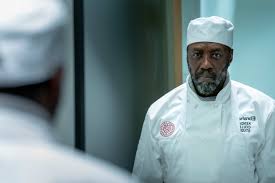
Gibson was also chosen to be part of the Sony Pictures Television Writing Program in 2022 for his pilot Nicodemus. “You can only be nominated, and you can’t submit your own work,” Gibson said. “They read the projects blindly, and after the first cut, they find out who wrote the work. The program is filled with prompts and learning how to talk about the script and television writing process beyond a pilot.” Gibson shared he remained close with Sony following the program.
Gibson is looking forward to his projects this coming year, sharing he “may be working in the UK a bit more in 2025”. To learn more about Edwin Lee Gibson, you can follow along on his Instagram, @EdwinLeeGibson.
Want to Age Like Fine Wine? Here’s What the Future of Anti-Aging Medicine Has to Offer
By Tequila Mockingbird
Los Angeles, CA (The Hollywood Times) 1/13/25 – Although I’m not aiming to live forever, I do want to be healthy for as long as I can—however long that may be. As long as we control our own destiny, it’s important to stay on the lookout for ways to keep our bodies as young as possible well into our golden years. So, what’s next in the world of anti-aging medicine? Let’s take a look at some of the most promising treatments on the horizon.
 1. Senolytics
1. Senolytics
What it does: Targets and eliminates senescent cells—those old, damaged cells that can contribute to aging and diseases associated with aging.
Examples:
- Dasatinib and Quercetin: A combination therapy that’s shown promising results in animal studies and early human trials.
- Fisetin: A natural compound found in fruits and vegetables that has senolytic properties.
2. Autophagy Inducers
What it does: Autophagy is the process by which our cells clean out damaged components and recycle them. Inducing autophagy is believed to maintain cellular health.
Examples:
- Spermidine: Found in foods like mushrooms and legumes.
- Rapamycin: An immunosuppressant drug that’s showing potential for anti-aging benefits as it induces autophagy.
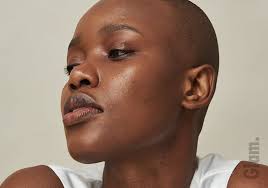 3. NAD+ Boosters
3. NAD+ Boosters
What it does: NAD+ (nicotinamide adenine dinucleotide) plays a key role in cellular energy production and repair. Levels of NAD+ decline as we age, but boosting its levels may help slow aging and prevent disease.
Examples:
- Nicotinamide Riboside (NR) and Nicotinamide Mononucleotide (NMN): Both are precursors to NAD+ that help increase its levels in the body.
4. Calorie Restriction Mimetics
What it does: These compounds mimic the benefits of calorie restriction without requiring extreme dietary changes.
Examples:
- Metformin: A diabetes drug that’s showing potential as an anti-aging agent in animal studies.
- Spermidine: It not only induces autophagy but may also act as a calorie restriction mimetic.
 5. Antioxidants
5. Antioxidants
What it does: Antioxidants help protect cells from oxidative stress, a major contributor to aging.
Examples:
- Resveratrol: Found in grapes and red wine, it has both antioxidant and anti-inflammatory properties.
- Astaxanthin: A potent antioxidant found in algae and seafood.
Important Notes to Remember:
- Research is still ongoing: Many of these supplements are still in the early stages of research. Their long-term effects and safety have yet to be fully understood.
- Individual approach: The best way to fight aging will vary based on your genetics, health status, and other personal factors.
- Consult a healthcare professional: Before starting any new supplement regimen, especially if you have any health conditions, be sure to consult with your doctor.
 This field is moving fast, and new breakthroughs are happening all the time. So, keep an eye on the latest research and talk to qualified healthcare professionals to stay ahead of the curve.
This field is moving fast, and new breakthroughs are happening all the time. So, keep an eye on the latest research and talk to qualified healthcare professionals to stay ahead of the curve.
Live Action Short Film category for the 97th Academy Awards Director T.J. O’Grady’s short film “Room Taken”
By: Valerie Milano
Los Angeles, CA (The Hollywood Times) 1/13/2025 – At one time or another, we have all experienced loneliness, and it’s not an overstatement to say it can profoundly affect your overall being. The loneliness epidemic is a major concern, and has been linked to high blood pressure, depression, heart disease, stroke, and more.
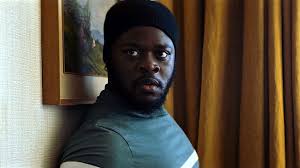
Studies have shown loneliness is more common in those who face structural vulnerabilities, including homelessness. It’s a worldwide phenomenon, and as more people are forced to immigrate, the solutions are not forthcoming, and people are forced to do whatever they can to find some security.
Themes of loneliness, grief, and the immigrant experience are the subject of “Room Taken,” a short film directed by T.J. O’Grady-Peyton is adapted from a screenplay by first-time writer Michael Whelan. The story follows Isaac, a recent immigrant to Ireland, who, struggling to find accommodations, quietly moves into the home of Victoria, an elderly blind woman. Their unexpected cohabitation leads to the development of a unique and tender bond.
 O’Grady-Peyton sat down with The Hollywood Times for an exclusive chat about his film. O’Grady-Peyton and Whelan met on a commercial shoot a couple of years ago, and the pair were inspired to collaborate on a project when Whelan sent O’Grady-Peyton sent his first attempt at screenwriting, the director liked what he saw. “I remember reading it and feeling super moved by the story, O’Grady-Peyton said. I really felt moved by it and I was totally convinced that this would be a great project and something that had a really unique concept.’
O’Grady-Peyton sat down with The Hollywood Times for an exclusive chat about his film. O’Grady-Peyton and Whelan met on a commercial shoot a couple of years ago, and the pair were inspired to collaborate on a project when Whelan sent O’Grady-Peyton sent his first attempt at screenwriting, the director liked what he saw. “I remember reading it and feeling super moved by the story, O’Grady-Peyton said. I really felt moved by it and I was totally convinced that this would be a great project and something that had a really unique concept.’
Click below for our exclusive interview
Indeed, the questions of homelessness among recent immigrants to Ireland made the story a hot-button issue. In addition, personal events in the director’s and writer’s lives introduced an aspect of grief. The duo went looking for funding for the project, and once that was secured, they were off on what O’Grady-Peyton called, “a crazy kind of journey” to bring the film to an audience.
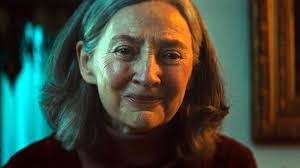
“Room Taken” stars Bríd Brennan (Hope Street) as Victoria, the blind woman, alongside newcomer Gabriel Adewusi’s portrayal of Issac, the homeless immigrant who just needs a break to make it in his new country.
“Room Taken” has garnered significant recognition, earning a spot on the Oscars longlist after winning Best Short at the 2024 Cleveland International Film Festival and receiving a gold medal for Best Film at the Manhattan Short Film Festival.

O’Grady-Peyton’s previous works include IFTA award-winning short film “Wave” as well as 2021’s “Silence,” which was nominated for an IFTA.
Colmán Mac Cionnaith (Supergirl) is the film’s producer, and the list of executive producers includes actor Colin Ferrell, along with Cormack Fox, Sandro Monetti, Christopher Oakland, Emma Scott and David Treatman.
Speaking with Variety, Farrell said, “Room Taken is such a gentle cry to the power of human connection. It treats loneliness and grief and the struggle of the immigrant with such a gentle hand, bringing its character and narrative threads together beautifully.”
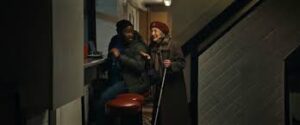 Farrell said the film “wears its compassion – along with its heart – on its sleeve with tender performances. The story stayed with me long after viewing, I was thrilled to be asked to be a part of helping ‘Room Taken’ find as wide an audience as possible.”
Farrell said the film “wears its compassion – along with its heart – on its sleeve with tender performances. The story stayed with me long after viewing, I was thrilled to be asked to be a part of helping ‘Room Taken’ find as wide an audience as possible.”
Get Your Best of Fest Tickets Today 

|
Get Your Best of Fest Tickets for tomorrow, Monday Jan 13 

|
The “tranny chaser” phenomenon gets a short and funny treatment in the film “Sweet Talkin’ Guy,” set for Sundance later this month
By: Valerie Milano
Palm Springs, CA (The Hollywood Times) 1/11/25 –
By: Valerie Milano
Palm Springs, CA (The Hollywood Times) 1/11/25 – They’re called “tranny chasers,” men who are sexually attracted to transgender or transsexual people, generally in a fetishistic way. Driven by thrill or curiosity, they “chase” after male-to-female transwomen, and are prevalent in the transgender scene in every major city where transgender women are prevalent.
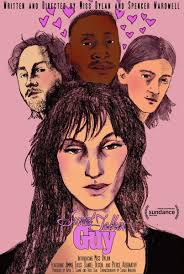 A portion of society may consider these men gay, but make no mistake, these men do not like other men and are only attracted to transsexuals because they look like women. These “chasers” will tell you they are not gay because it is widely accepted that gay men do not like male to female transsexuals because, well, gay men like men not men who look like women.
A portion of society may consider these men gay, but make no mistake, these men do not like other men and are only attracted to transsexuals because they look like women. These “chasers” will tell you they are not gay because it is widely accepted that gay men do not like male to female transsexuals because, well, gay men like men not men who look like women.
No matter what your personal position is on the gayness of these “chasers”, there is a common thread running through the community of men who date transgender women. They all seem to be after one thing, and it’s not love.
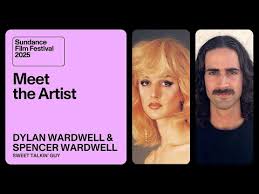
Spencer Wardwell and Dylan Wardwell on “Sweet Talkin’ Guy”
This phenomenon is the subject of “Sweet Talkin’ Guy,” an intriguing short by sister/brother filmmakers Dylan and Spencer Wardwell that follows three men as they pursue the same fantasy with a transwoman. The film is short and sweet at 4 1/2 minutes as the transwoman, played by Dylan, who is a non-binary French and Portuguese model, endures the men grappling with their fragile masculinity.
Dylan and Spencer sat down with The Hollywood Times recently to talk about their film and the “chaser” phenomenon. Inspired by her own experiences in the dating world, Dylan said she thinks all men are clumsy when it comes to dating.
Click below for our exclusive interview:
“My lived experience is that a lot of men just don’t know how to act,” she said with a laugh.
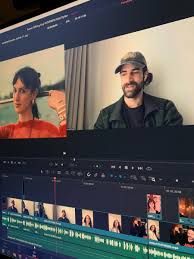 Dylan billed as “Miss Dylan” in the pivotal role as the object of the three men’s desires makes her home in New York City and is making her acting/writing/directing debut with this film. She went on to address the fetishistic element to dating, and said it isn’t always the case that men are trying to check off a fantasy on some sexual “bucket list”. However, it may seem that way in the film, with the ultimate question from each of the 3 suitors at the end, in that they are all rather excited to perform oral sex on her.
Dylan billed as “Miss Dylan” in the pivotal role as the object of the three men’s desires makes her home in New York City and is making her acting/writing/directing debut with this film. She went on to address the fetishistic element to dating, and said it isn’t always the case that men are trying to check off a fantasy on some sexual “bucket list”. However, it may seem that way in the film, with the ultimate question from each of the 3 suitors at the end, in that they are all rather excited to perform oral sex on her.
“Quite frankly, that’s a rather extrapolated example in a lot of cases, but when there is that juxtaposition, I find it extremely funny and ironic, and I thought it was extremely appropriate in the short. But it is what it is for everyone.”
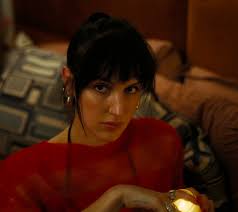
Director Spencer Wardwell and director/star Dylan Wardwell discuss their Sundance-selected short film Sweet Talkin’ Guy.
Spencer pointed to his role as an experienced filmmaker with several short films to his credit as advisory to Dylan’s effort to communicate her lived experiences.
“We’ve wanted to collaborate on something for a very long time,” he said. “I was there to facilitate her vision.”
That vision comes to life in “Sweet Talkin’ Man” as these 3 guys work their butts off to make sure the woman knows they are straight – or more accurately, as they try to convince themselves that being with a transwoman doesn’t make them gay. Dylan has no dialogue in the film, rather allowing the words and actions of the men to do all the talking as she speaks volumes with her eyes and body language.
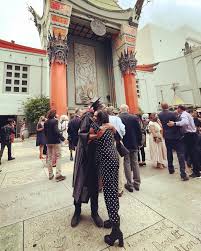 As for the question of, how does this kind of non-stop pseudo-justification and fetish denial by the men make her feel as the woman she most definitely is? Dylan said it is truly a disappointment to her.
As for the question of, how does this kind of non-stop pseudo-justification and fetish denial by the men make her feel as the woman she most definitely is? Dylan said it is truly a disappointment to her.
“It’s disheartening to hear a man say these things where they are confused by their attraction to a transwoman, and shouldn’t be,” she said. “They’re a straight man who is attracted to a woman. But it is always kind of jarring when someone is confused by this. I don’t understand their confusion.”
Sarah Welden’s cinematography adds power to the impact of this truly entertaining film. Spencer said it was his first time working with her, but her enthusiasm and attention to detail made this a “very special” collaboration.
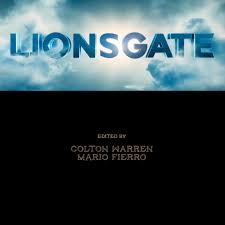 “Sarah was recommended to us by multiple sources, and she came on board very early on in the pre-production process,” he said. “She has a really great eye. We had a limited budget, and she was working under extremely limited constraints, and she just knocked it out of the park.”
“Sarah was recommended to us by multiple sources, and she came on board very early on in the pre-production process,” he said. “She has a really great eye. We had a limited budget, and she was working under extremely limited constraints, and she just knocked it out of the park.”
Film editor Mario Fierro is a classmate of Spencer’s from the American Film Institute, and a chance meeting in Los Angeles led to his involvement in the project, which is scheduled to be screened at the Sundance Film Festival in Short Program 4 on January 25th.
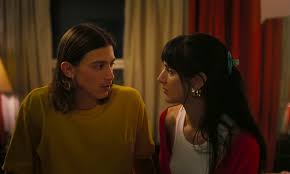 “I didn’t get the opportunity to work with him at school, but we were searching for an editor, and I happened to bump into him,” Spencer said. “We were working hard to meet that Sundance deadline, and he did a really great job as well.”
“I didn’t get the opportunity to work with him at school, but we were searching for an editor, and I happened to bump into him,” Spencer said. “We were working hard to meet that Sundance deadline, and he did a really great job as well.”
“Sweet Talkin’ Guy” also features Jimmie Fails, Daniel Olson and Pierce Abernathy as the three gentlemen who wrestle with their sexual identities in this impressive first effort by Dylan.
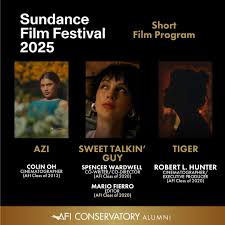 The film was produced by April S. Changan an L.A.-based producer from Atlanta, and filmmaker/producer Vicki Syal, also based in L.A. with roots in Brazil and India. Justin Floyd and Louie Torrellas were executive directors for the film.
The film was produced by April S. Changan an L.A.-based producer from Atlanta, and filmmaker/producer Vicki Syal, also based in L.A. with roots in Brazil and India. Justin Floyd and Louie Torrellas were executive directors for the film.
Yes, We Will Rebuild—But How Will We Rebuild?
By Tequila Mockingbird
Los Angeles, CA (The Hollywood Times) 1/12/25 – The future has come crashing into the present, reshaping everything we thought we knew. Now, the question isn’t just about rebuilding; it’s about how the future will take over. What will it look like? To find out, I turned to AI for answers.
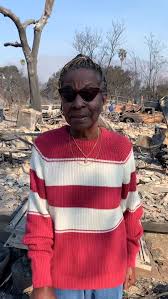 Imagine a smart village—a community that blends cutting-edge technology with a deep respect for culture and environment. Here’s a glimpse of what this futuristic yet grounded vision might look like:
Imagine a smart village—a community that blends cutting-edge technology with a deep respect for culture and environment. Here’s a glimpse of what this futuristic yet grounded vision might look like:
1. Sustainable Infrastructure
- Renewable Energy: Solar panels, wind turbines, and other clean energy solutions power homes and businesses, reducing dependency on fossil fuels.
- Efficient Water Management: Rainwater harvesting and smart irrigation conserve water, while advanced purification systems ensure clean supplies.
- Green Transportation: Electric vehicles, bike-friendly paths, and walkable streets promote sustainability and health.
- Smart Grids: Modernized electrical grids distribute energy efficiently, integrating renewable sources seamlessly.
2. Enhanced Quality of Life
- High-Speed Internet: Affordable, reliable internet connects residents to global opportunities in education, healthcare, and work.
- Telemedicine: Remote healthcare services bring quality care to even the most remote corners.
- Smart Agriculture: Precision farming increases crop yields and reduces environmental impacts.
- Digital Education: Online learning and digital skills programs empower residents for the future.
3. Community Building
- Connected Platforms: Apps and online spaces foster collaboration and social interaction within the community.
- Cultural Preservation: Technology documents and celebrates local traditions, languages, and heritage.
- Civic Engagement: Digital tools give residents a voice in governance and community initiatives.
4. Economic Development
- Ecotourism: The village’s natural beauty and culture attract eco-conscious travelers.
- Agritourism: Farm stays and fresh, farm-to-table experiences thrive in this tech-enhanced rural economy.
- Entrepreneurship: Local businesses flourish with access to technology, training, and markets.
 Key Considerations for the Future
Key Considerations for the Future
Rebuilding isn’t just about deploying the latest gadgets. It’s about thoughtful innovation:
- Closing the Digital Divide: Ensuring everyone has access to technology and education.
- Protecting Privacy: Safeguarding personal data in the digital age.
- Empowering Communities: Ensuring locals play a central role in shaping their future.
- Honoring Culture: Keeping technological solutions respectful of local traditions and values.
Ultimately, a smart village is not about technology for its own sake. It’s about enhancing lives, nurturing the environment, and celebrating culture. As we rebuild, new blueprints and bold visions will shape environments that reflect the future’s demands while respecting the past.
 The ashes will cool, the carpenters will arrive, and the future’s story will unfold—brick by brick, byte by byte.
The ashes will cool, the carpenters will arrive, and the future’s story will unfold—brick by brick, byte by byte.









